MIT World: Engineering >>
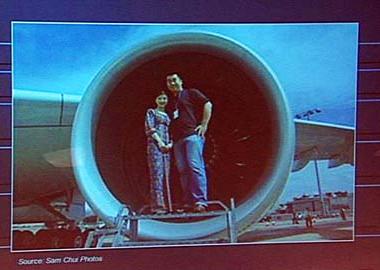 One of the nation’s revered technology leaders dispenses anecdotes and wisdom on the slippery subject of engineering systems (or systems engineering). Norm Augustine just can’t get a handle on the discipline: “No one agrees on what it is, or what it does.” After years in industries like Lockheed Martin, Augustine has come up with “Norm’s Rules,” and can at least define ‘system’ as “having two or more elements that interact,” and ‘engineering’ as “creating the means for performing useful functions.” But these definitions don’t get you too far in the real world.
One of the nation’s revered technology leaders dispenses anecdotes and wisdom on the slippery subject of engineering systems (or systems engineering). Norm Augustine just can’t get a handle on the discipline: “No one agrees on what it is, or what it does.” After years in industries like Lockheed Martin, Augustine has come up with “Norm’s Rules,” and can at least define ‘system’ as “having two or more elements that interact,” and ‘engineering’ as “creating the means for performing useful functions.” But these definitions don’t get you too far in the real world.
Augustine shows a fuel control system, which some engineers might view as part of a propulsion system. In turn, aeronautical engineers might think of the entire airplane as a system, and transport engineers view aircraft as merely components in systems incorporating airports, highways, shipping lanes. Augustine continues up the ladder until “our system that started as a fuel controller…seems to have the whole universe as a system.” Like Russian Matryoshka dolls, systems can always be embedded within larger systems. Even if you try to simplify a system in terms of just a few
 One of the nation’s revered technology leaders dispenses anecdotes and wisdom on the slippery subject of engineering systems (or systems engineering). Norm Augustine just can’t get a handle on the discipline: “No one agrees on what it is, or what it does.” After years in industries like Lockheed Martin, Augustine has come up with “Norm’s Rules,” and can at least define ‘system’ as “having two or more elements that interact,” and ‘engineering’ as “creating the means for performing useful functions.” But these definitions don’t get you too far in the real world.
One of the nation’s revered technology leaders dispenses anecdotes and wisdom on the slippery subject of engineering systems (or systems engineering). Norm Augustine just can’t get a handle on the discipline: “No one agrees on what it is, or what it does.” After years in industries like Lockheed Martin, Augustine has come up with “Norm’s Rules,” and can at least define ‘system’ as “having two or more elements that interact,” and ‘engineering’ as “creating the means for performing useful functions.” But these definitions don’t get you too far in the real world.Augustine shows a fuel control system, which some engineers might view as part of a propulsion system. In turn, aeronautical engineers might think of the entire airplane as a system, and transport engineers view aircraft as merely components in systems incorporating airports, highways, shipping lanes. Augustine continues up the ladder until “our system that started as a fuel controller…seems to have the whole universe as a system.” Like Russian Matryoshka dolls, systems can always be embedded within larger systems. Even if you try to simplify a system in terms of just a few

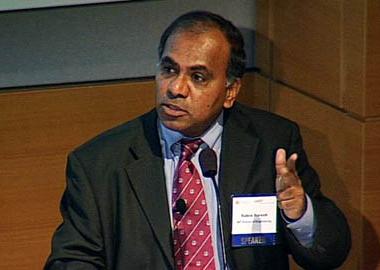 The field of systems engineering has only recently emerged, and as this symposium demonstrates, defies precise definition. But MIT has taken this evolving area to heart, nurturing a new division and encouraging a raft of ventures that in their execution, may help shape the field for the next century.
The field of systems engineering has only recently emerged, and as this symposium demonstrates, defies precise definition. But MIT has taken this evolving area to heart, nurturing a new division and encouraging a raft of ventures that in their execution, may help shape the field for the next century.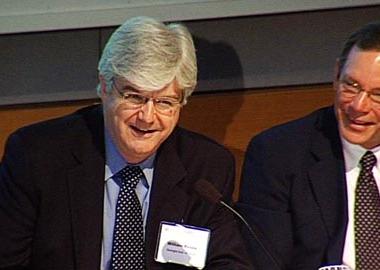 Real-world practitioners of systems engineering/engineering systems describe how the young discipline has shaped their very large enterprises.
Real-world practitioners of systems engineering/engineering systems describe how the young discipline has shaped their very large enterprises. 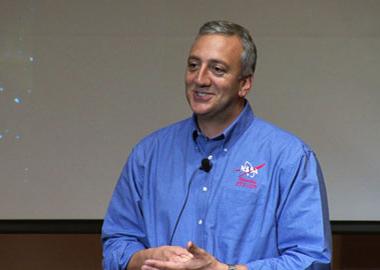 Astronaut Mike Massimino returns to MIT and shares his experience on the Space Shuttle Atlantis (STS-125). Topics include the challenges of space walking while repairing the Hubble, having the right tools on hand for high stakes repairs, and the long hours of practice that lead up to the task.
Astronaut Mike Massimino returns to MIT and shares his experience on the Space Shuttle Atlantis (STS-125). Topics include the challenges of space walking while repairing the Hubble, having the right tools on hand for high stakes repairs, and the long hours of practice that lead up to the task.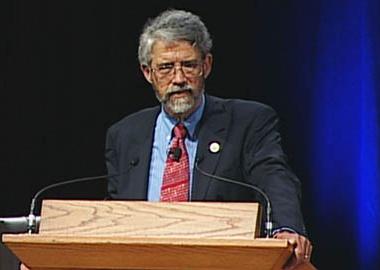 It’s no exaggeration to say John Holdren’s job involves tackling the most critical issues of our age: economic recovery and growth, health care, energy, climate change, global pandemics, national security, ecosystem preservation…the list goes on. As President Obama’s science and technology advisor, Holdren leverages the resources and collective acumen of the nation’s researchers and innovators to address these complex and urgent matters. At an MIT AeroAstro hosted event, Holdren makes the case that aerospace science, technology and education will provide a “crucial contribution to and driver of many relevant capabilities” the U.S. will need to meet this century’s challenges.
It’s no exaggeration to say John Holdren’s job involves tackling the most critical issues of our age: economic recovery and growth, health care, energy, climate change, global pandemics, national security, ecosystem preservation…the list goes on. As President Obama’s science and technology advisor, Holdren leverages the resources and collective acumen of the nation’s researchers and innovators to address these complex and urgent matters. At an MIT AeroAstro hosted event, Holdren makes the case that aerospace science, technology and education will provide a “crucial contribution to and driver of many relevant capabilities” the U.S. will need to meet this century’s challenges. 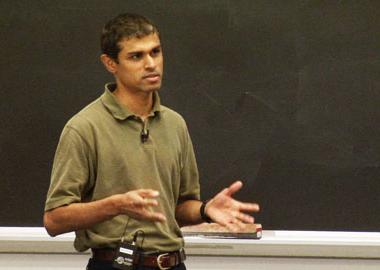 Road traffic is a challenging societal problem, and with the increasing crowding of areas in and around cities, it is only becoming worse. With the proliferation of wireless connectivity, smartphones (think cheap embedded computers), it is now possible to continuously monitor urban areas using mobile sensors carried by people while they drive.
Road traffic is a challenging societal problem, and with the increasing crowding of areas in and around cities, it is only becoming worse. With the proliferation of wireless connectivity, smartphones (think cheap embedded computers), it is now possible to continuously monitor urban areas using mobile sensors carried by people while they drive. 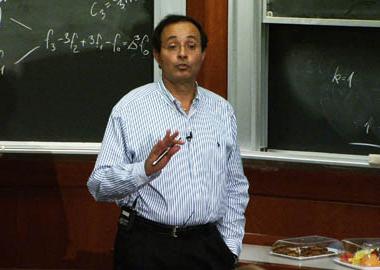 The need for flexible management of supply chains to increase operational efficiencies could not be greater, as modern companies outsource and manufacture overseas. David Simchi-Levi observes that between 2003 and 2008 labor costs increased by 21% in Brazil, 19% in China, and 3% to 8% in other countries. Meanwhile, logistic costs, as a percentage of gross domestic product (GDP), began to rise in 2003, after declining steadily. Adding to this unstable business mix has been tremendous volatility and fluctuation in oil prices.
The need for flexible management of supply chains to increase operational efficiencies could not be greater, as modern companies outsource and manufacture overseas. David Simchi-Levi observes that between 2003 and 2008 labor costs increased by 21% in Brazil, 19% in China, and 3% to 8% in other countries. Meanwhile, logistic costs, as a percentage of gross domestic product (GDP), began to rise in 2003, after declining steadily. Adding to this unstable business mix has been tremendous volatility and fluctuation in oil prices. 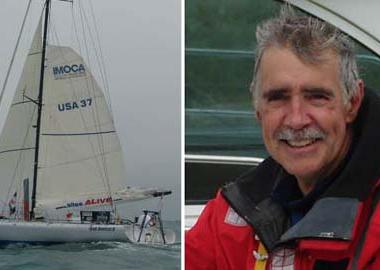 Rich Wilson had followed the Vendée Globe Race ('round-the-world single-handed) since its inception in 1988 but had never considered sailing it himself—“too hard, too long, too dangerous, too risky, too, too, too, the boats were too big, the sails were too big.”
Rich Wilson had followed the Vendée Globe Race ('round-the-world single-handed) since its inception in 1988 but had never considered sailing it himself—“too hard, too long, too dangerous, too risky, too, too, too, the boats were too big, the sails were too big.” 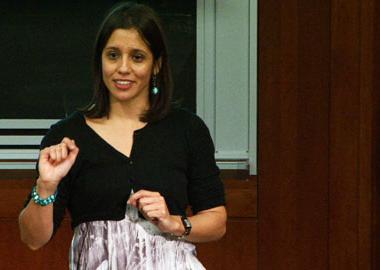 Researchers who wish to study mobility patterns might be reaching for your phone. Increasingly, cell phones are equipped with locational receivers (Global Positioning Systems or GPS) and their bread crumb trails are opening up entirely new ways to study and predict the dynamics of travel. “We are in the GPS revolution because most PCS of tomorrow will be in our hands in the (form of) the smart phone”, according to Marta González. San Francisco is a city on the forefront of this revolution: there, willing cell phone users have voluntarily uploaded their GPS trajectories.
Researchers who wish to study mobility patterns might be reaching for your phone. Increasingly, cell phones are equipped with locational receivers (Global Positioning Systems or GPS) and their bread crumb trails are opening up entirely new ways to study and predict the dynamics of travel. “We are in the GPS revolution because most PCS of tomorrow will be in our hands in the (form of) the smart phone”, according to Marta González. San Francisco is a city on the forefront of this revolution: there, willing cell phone users have voluntarily uploaded their GPS trajectories. 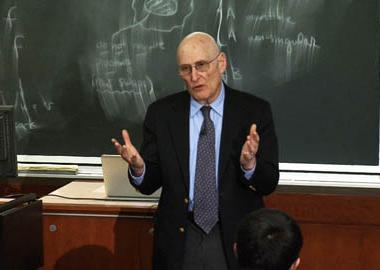 In the nineteen fifties and sixties, students of transportation focused on building infrastructure and applied lessons from the physical sciences to designing mobility. Mobility was facilely linked to the engines of economic growth and expanding GDP. In time, that perspective was replaced by a focus on transportation systems and networks. There was a newfound emphasis on environmental impacts, land use, and intermodal freight. There was also a growing concern on unpriced externalities. Today, Joseph Sussman explains, with many of those problems still unsolved, transportation has entered a new phase-- a period of immense complexity or CLIOS, which stands for complex, large scale, interconnected, open and sociotechical is an acronym that is becoming the mantra of transportation engineers. While it is not as far-reaching as "chaos" to a physicist, it is an approach with far-reaching consequences for the transportation field.
In the nineteen fifties and sixties, students of transportation focused on building infrastructure and applied lessons from the physical sciences to designing mobility. Mobility was facilely linked to the engines of economic growth and expanding GDP. In time, that perspective was replaced by a focus on transportation systems and networks. There was a newfound emphasis on environmental impacts, land use, and intermodal freight. There was also a growing concern on unpriced externalities. Today, Joseph Sussman explains, with many of those problems still unsolved, transportation has entered a new phase-- a period of immense complexity or CLIOS, which stands for complex, large scale, interconnected, open and sociotechical is an acronym that is becoming the mantra of transportation engineers. While it is not as far-reaching as "chaos" to a physicist, it is an approach with far-reaching consequences for the transportation field.